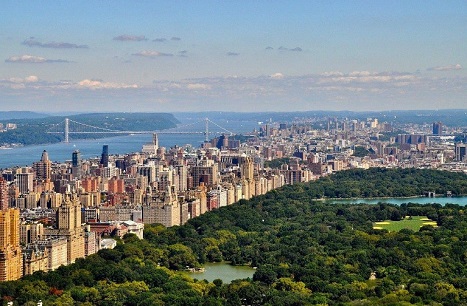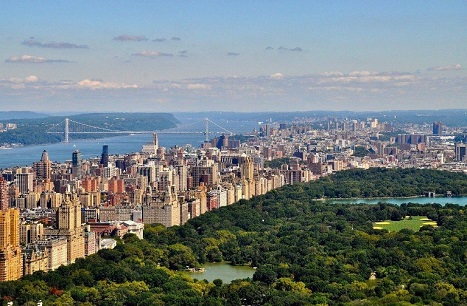Sustainable City Guide: How To Make Your City More Sustainable in 2022Posted by Stephen Shickadance in Inspiring Projects. Solar Lighting Economics. Applications of Solar Lighting.
Only 2% of the world's land mass holds 55% of the world’s population, 78% of global energy consumption, and 60% of global greenhouse gas (GHG) emissions. That’s how resource-intensive the cities of the world are today, and why a shift toward urban sustainability is so essential. Sustainable city development will be an integral part of addressing our climate and energy challenges, and urban planners are already taking steps to make cities cleaner and greener for all. In this article, we’ll look at what constitutes a sustainable city, and how urban areas can go green today.
From streamlining transit networks to keeping waste out of the landfill, there are many steps that planners can take to move toward a sustainable city today. What Is a Sustainable City?Sustainability is often viewed as pertaining strictly to the environment, but the issue is bigger than that. Sustainable city design must address the social and economic impacts of urban planning and should improve the well-being of both its residents and our world. Some factors that planners should take into consideration when they develop sustainable cities are:
When designing environmentally sustainable cities, urban developers should consider the health, economic, and sociological impacts that their decisions will have on the residents that they serve. 4 Practical Ways To Make Your City More SustainableFrom sustainable infrastructure in cities to renewable energy power sources, there are many ways that urban planners can make their cities more sustainable. Some are long-term efforts while others require legislation that keeps the environment in mind, but all are part of a strategy that will help make your city more sustainable. Here are four sustainable city design strategies that urban planners should consider. A Convenient CommuteThe pandemic skewed the data, but crowded cities have made traffic time miserably long for commuters. Lockdowns, restrictions, and remote work caused traffic delays to drop by nearly 50% in 2020, but the most recent pre-COVID data shows that residents of the 15 most populous cities in the U.S. spent 83 hours stuck in traffic each year. As cities transition to a post-pandemic state of mind, they can expect traffic delays to return to normal, too. The solution is to create sustainable infrastructure in cities. City planners should consider modern commuting solutions to make their city more sustainable, some of which are:
Automated vehicles that receive input regarding the most efficient route will also help streamline the traffic flows of tomorrow's urban centers, but whatever approach developers take, they must come up with ways to make their infrastructure match their sustainable city hopes. Urban AgricultureFood security is essential in every part of the world. The world's population is expected to grow to 10 billion people by 2050 — many of whom will live in cities — and that will cause food demand and emissions to rise along with it. That means policymakers are faced with the challenge of securing a food supply for more people, without further straining the environment. If cities are going to meet the food supply challenge, urban farming programs will be part of how they do it. No matter what form they take, local agricultural initiatives can help make cities more sustainable in several ways, like:
The benefits of urban farming show how intertwined sustainability efforts are. For example, the shorter supply chain created by locally-sourced food also lowers emissions and reduces traffic flows, further relieving the problems caused by congested roads. Recycling and ConservationTheir high population and economic activity make urban centers a major waste producer, and that makes recycling and conservation efforts an essential part of developing environmentally sustainable cities. As of 2018 — the most recent year for which data was available — the U.S. produced 294 million tons of municipal solid waste (MSW), the equivalent of 4.9 pounds per person per day. Of this, only 32% was recycled. Thankfully, urban planners and policymakers have come up with many innovative strategies for sustainable cities to address their waste management needs. Some of them are:
As helpful as conservation and waste management programs are, many of them only delay the inevitable. Recycling plastics often degrades their quality until they can eventually be repurposed no further, which makes upcycling an essential part of a circular economy where nothing is wasted. Outdoor Solar Lighting for Public LandsProper lighting is an essential component of creating sustainable cities and is a prerequisite to making other sustainable city designs work. Lighting up the landscape can help cities become more sustainable in several ways, like:
Safer transit, urban agricultural use, and energy conservation are all empowered by outdoor lighting solutions, and that means solar lighting should be considered an integral part of sustainable city design. Go Green in 2022Urban planners and policymakers have many challenges to face as cities continue to grow — but with more challenges come more opportunities to go green. Sustainable city design can help satisfy world resource demands, reduce consumption, improve accessibility, and make urban centers a better place for all. At Greenshine, we care about environmentally sustainable cities. We help cities and towns of all sizes become more sustainable with outdoor solar lighting that makes other sustainability improvements possible. If you'd like to light up the future and take a step toward making your city more sustainable, contact us today, and we'll show you how we can help.
Inspiring Projects
Solar Lighting Economics
Applications of Solar Lighting
|
ArchivesNo Archives Categories
Want More Info? |
LATEST NEWS & ARTICLES

